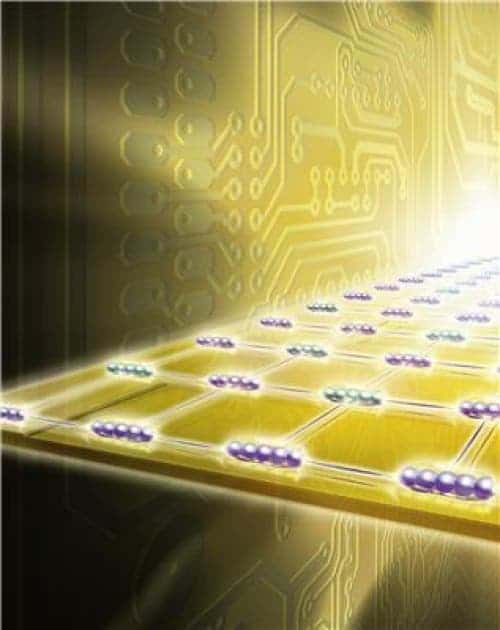Researchers from the University of Cambridge in England claim to have unraveled one of the great mysteries of electromagnetism, and believe their work in ultra-small antennas could not only revolutionize global communications, but also explain some of the tricky areas where electromagnetism and quantum physics overlap.

Basically, they’ve found that electromagnetic waves are not only generated from the acceleration of electron, but also from something called symmetry breaking. Symmetry breaking in physics describes a phenomenon where (infinitesimally) small fluctuations acting on a system which is crossing a critical point decide the system’s fate, by determining which branch of a bifurcation is taken. Imagine taking a long line of small line of infinitely small, random 50-50 decisions which ultimately decide the (electromagnetic) outcome. Needless to say, the implications for wireless communications are huge.
“Antennas, or aerials, are one of the limiting factors when trying to make smaller and smaller systems, since below a certain size, the losses become too great,” said Professor Amaratunga of Cambridge’s Department of Engineering. “An aerial’s size is determined by the wavelength associated with the transmission frequency of the application, and in most cases it’s a matter of finding a compromise between aerial size and the characteristics required for that application.”
The problem is that even though we’ve been using these aerials (antennas) for quite a while, there’s still a lot we don’t yet understand about them. Specifically, some physical variables associated with radiation of energy are not thoroughly understood. Electromagnetic theory becomes sort of problematic when dealing with radio wave emissions from a dielectric solid, something which occurs in ever modern phone or laptop.
“In dielectric aerials, the medium has high permitivity, meaning the velocity of the radio wave decreases as it enters the medium,” said researcher Dr Dhiraj Sinha. “What hasn’t been known is how the dielectric medium results in emission of electromagnetic waves. This mystery has puzzled scientists and engineers for more than 60 years.”
As you get to working with smaller and smaller components, quantum theory starts to slowly take over. But the thing is, the phenomenon of radiation due to electron acceleration, which stands out perfectly fine in electromagnetic theory, has no equivalent in quantum mechanics. This is where this new work might step in – proposing that symmetry breaking is also responsible for some of the radiation. When electronic charges are not in motion, there is symmetry of the electric field, and when it breaks, that creates radiation i tiny steps.
“If you want to use these materials to transmit energy, you have to break the symmetry as well as have accelerating electrons – this is the missing piece of the puzzle of electromagnetic theory,” said Amaratunga. “I’m not suggesting we’ve come up with some grand unified theory, but these results will aid understanding of how electromagnetism and quantum mechanics cross over and join up. It opens up a whole set of possibilities to explore.”
It’s quite a basic realization, but it’s actually a breakthrough – a potential paradigm shift; it’s one of those rare things that might help expand our understanding of theoretical physics, as well as having direct and immediate implications in day to day life. But don’t get all excited yet – it’s still going to be quite a while before our smartphones can be upgraded with this knowledge.
“It’s actually a very simple thing, when you boil it down,” said Sinha. “We’ve achieved a real application breakthrough, having gained an understanding of how these devices work.”





